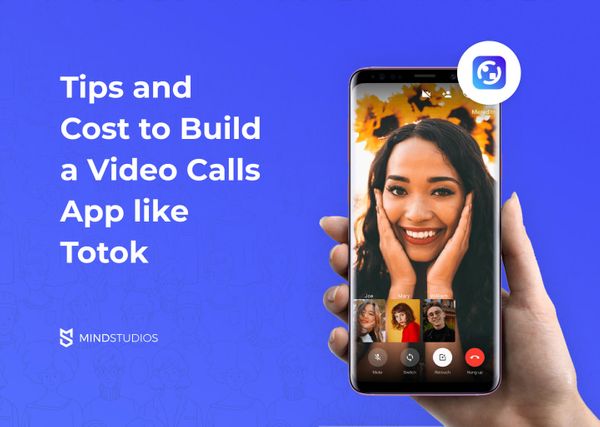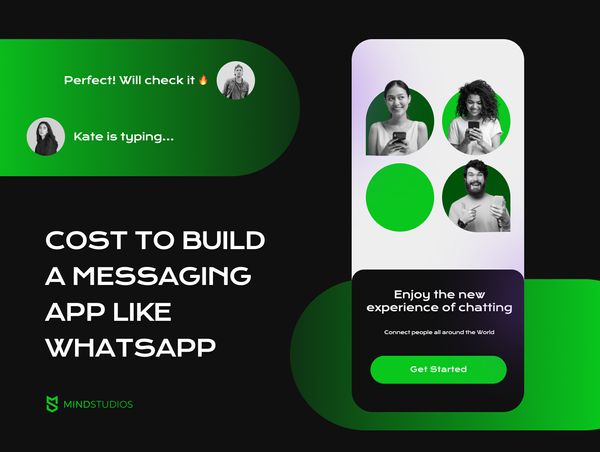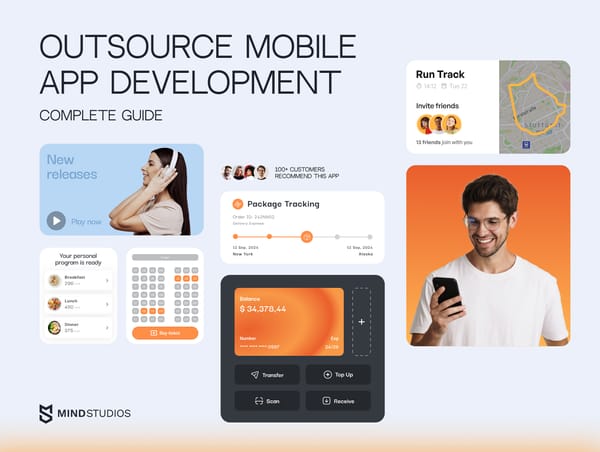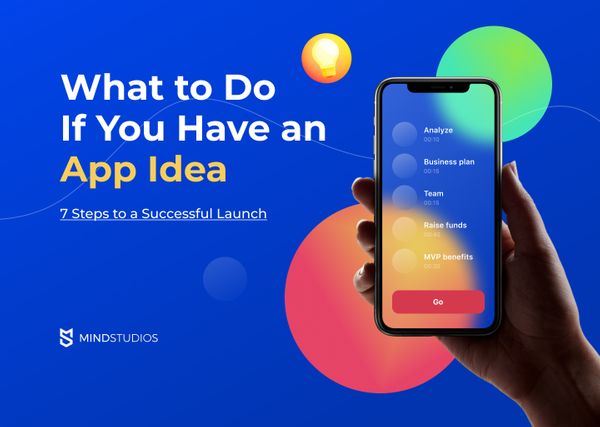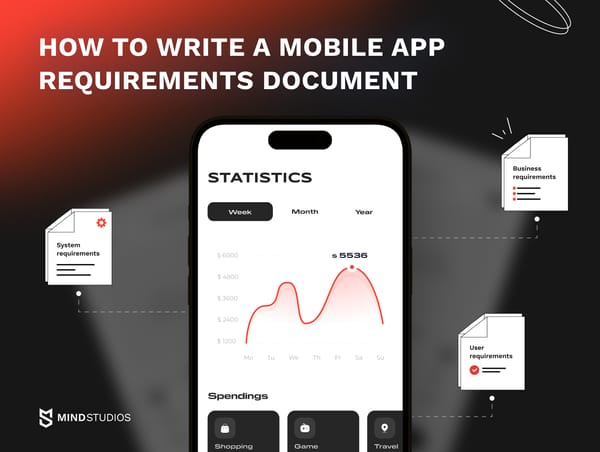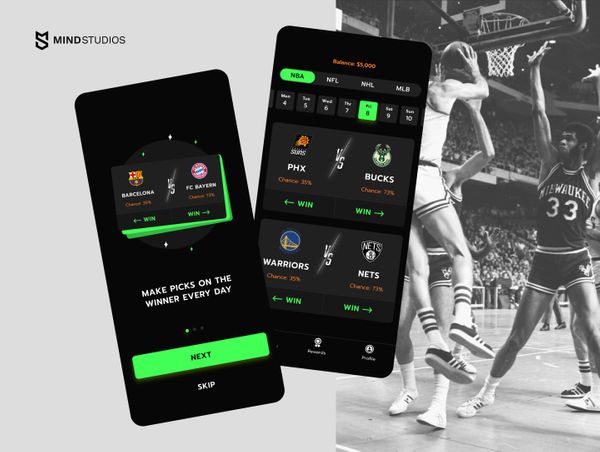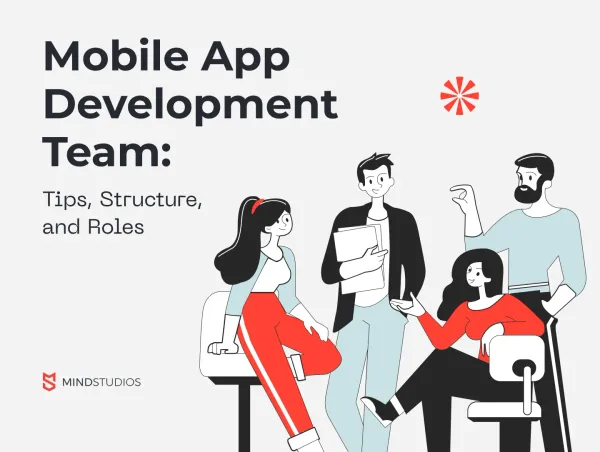It’s fine to celebrate success but it is more important to heed the lessons of failure.
Bill Gates
In this article, we share life hacks for how to make money in mobile applications — in other words how to get your mobile application to work and create revenue for you.
According to Statista, revenue from free applications ($37 billion) is currently more than revenue from paid applications ($29 billion). Why is this? The logic is as follows: users prefer not to pay for an application but to get it free. But how can you make money from free mobile applications.
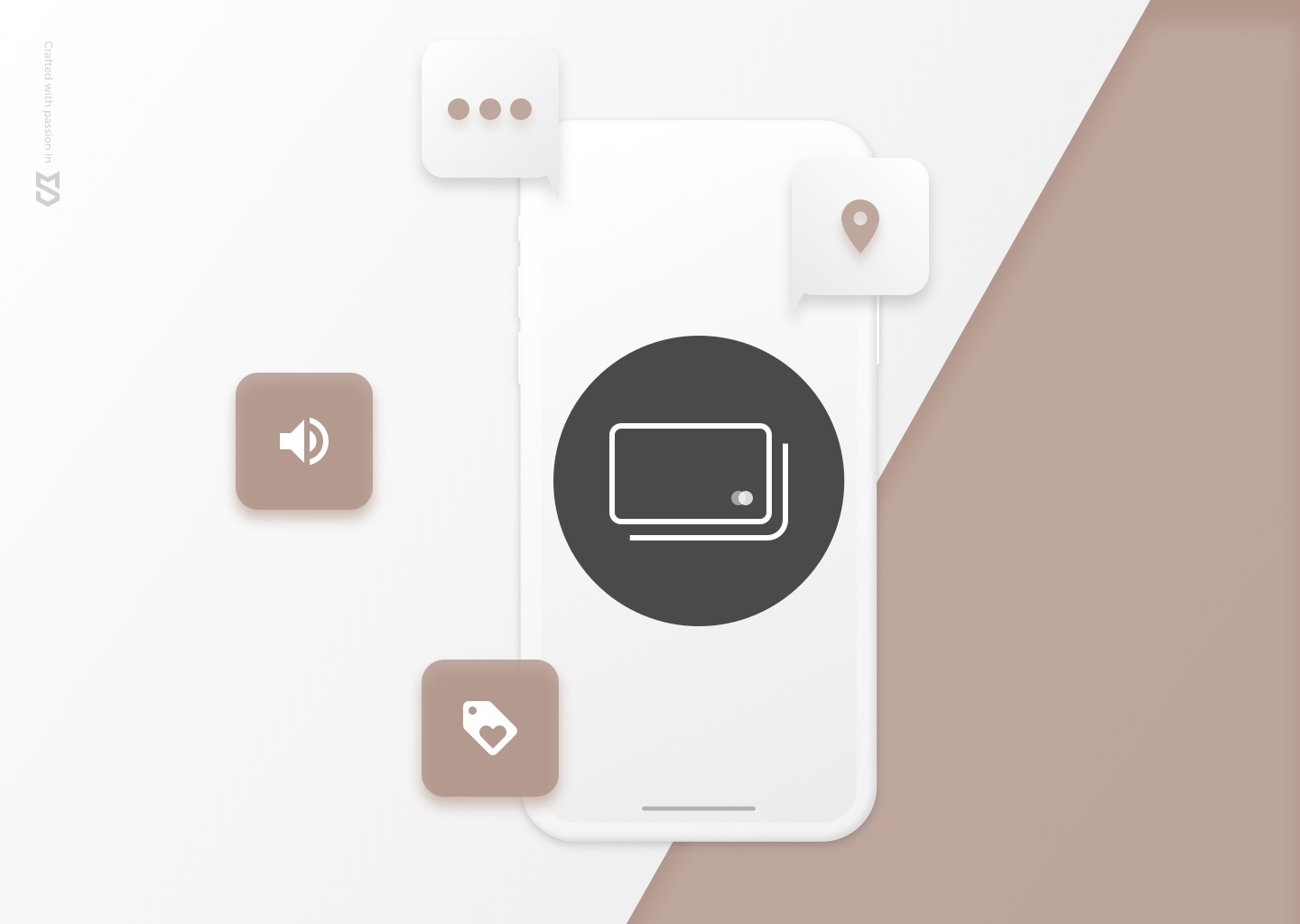
As of March 2018, Google Play had more than 3 million applications and the Apple App Store had more than 2 million applications. According to a study of the distribution of free and paid Android applications in the Google Play Store for the first quarter of 2018, we can conclude that 94.24% of all Android applications were available to users free of charge. According to a forecast of the mobile market conducted by App Annie, by 2021 global consumer spending on mobile applications will exceed $139 billion; Statista estimates that in 2020 the gross annual revenue from mobile apps will exceed $189 billion.
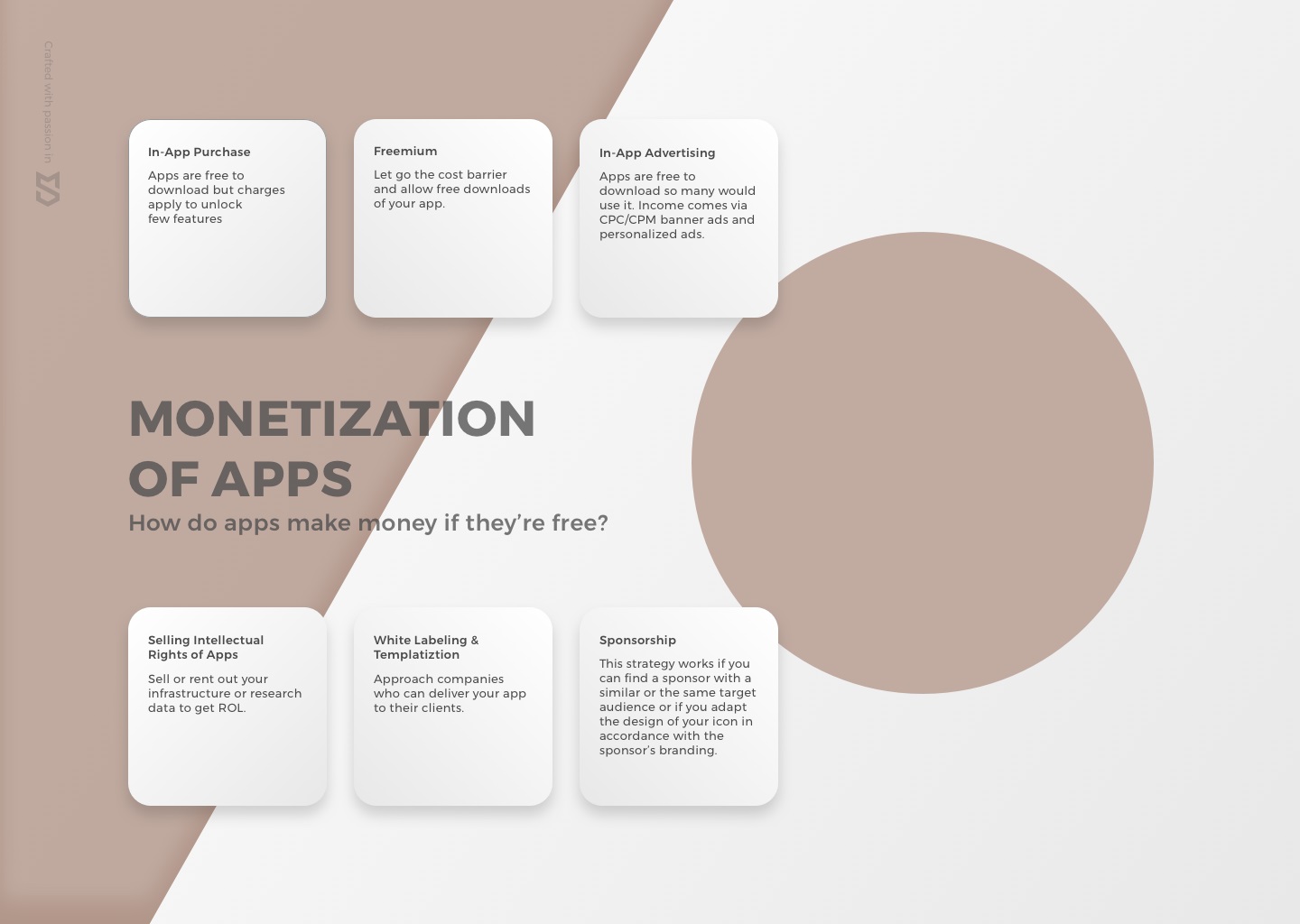
Based on these statistics, a paid version of an application can be a supplement to a freemium version, which we’ll discuss in this article, or be a separate paid product. Naturally, your product should be of interest to users so that they want to pay for the functionality provided by your paid application and aren’t disappointed. Therefore, you must take into account the fact that customers who pay for applications have higher expectations than those who download applications free of change.
In addition, it’s difficult for a paid application to compete with a free application, even if the interface of the free app contains annoying advertising. How do apps make money if they’re free? Let’s consider popular methods for monetizing free applications.
Your goal is revenue
Currently earning money in applications has become even easier and more interesting. But what app monetization strategy should you follow? This is strictly your choice.
Let’s start with the traditional approach to making money with free apps.
Free apps with ads
Don't assume that a free application is a bad thing for your business. First, users are always happy if they don’t need to pay for an interesting application. Second, you can be a connection between an advertiser and your users. If you earn money from advertising, then your goal is to sell advertising space. In addition, you can offer your customers a paid version of your mobile application that doesn’t contain so-called obtrusive advertising.
By placing ads in your mobile app, you earn revenue each time an ad is displayed (in other words, for each impression) as well as for clicks on an ad or when a user installs an app that’s advertised.
-
Pros
If your application is free, users will willingly download it. Indeed, if your application is interesting, convenient, and useful, then users will be motivated to use it in everyday life even if there’s advertising. -
Cons
The downside is that there will always be dissatisfied people who will leave negative feedback because of irritation. According to statistics, although about 20% of users say that they usually click on ads in mobile applications, almost two-thirds indicate a lack of interest in viewing ads in an application.
Our next question is how do free apps make money without ads?
Freemium
What does freemium mean? The philosophy of this business model is in the name: offering a combination of both free and premium services. You can use the free version, but it will not have all the features of the paid version. Therefore, freemium is a hybrid monetization model between free and premium apps. Thanks to trial versions or free plans, you can distribute information about your product to the masses. First, you offer users the basic services of your product, then you promote the premium features. This model is used by gaming companies when special functions are paid.
In this article, we’ll give you a few examples of such applications.
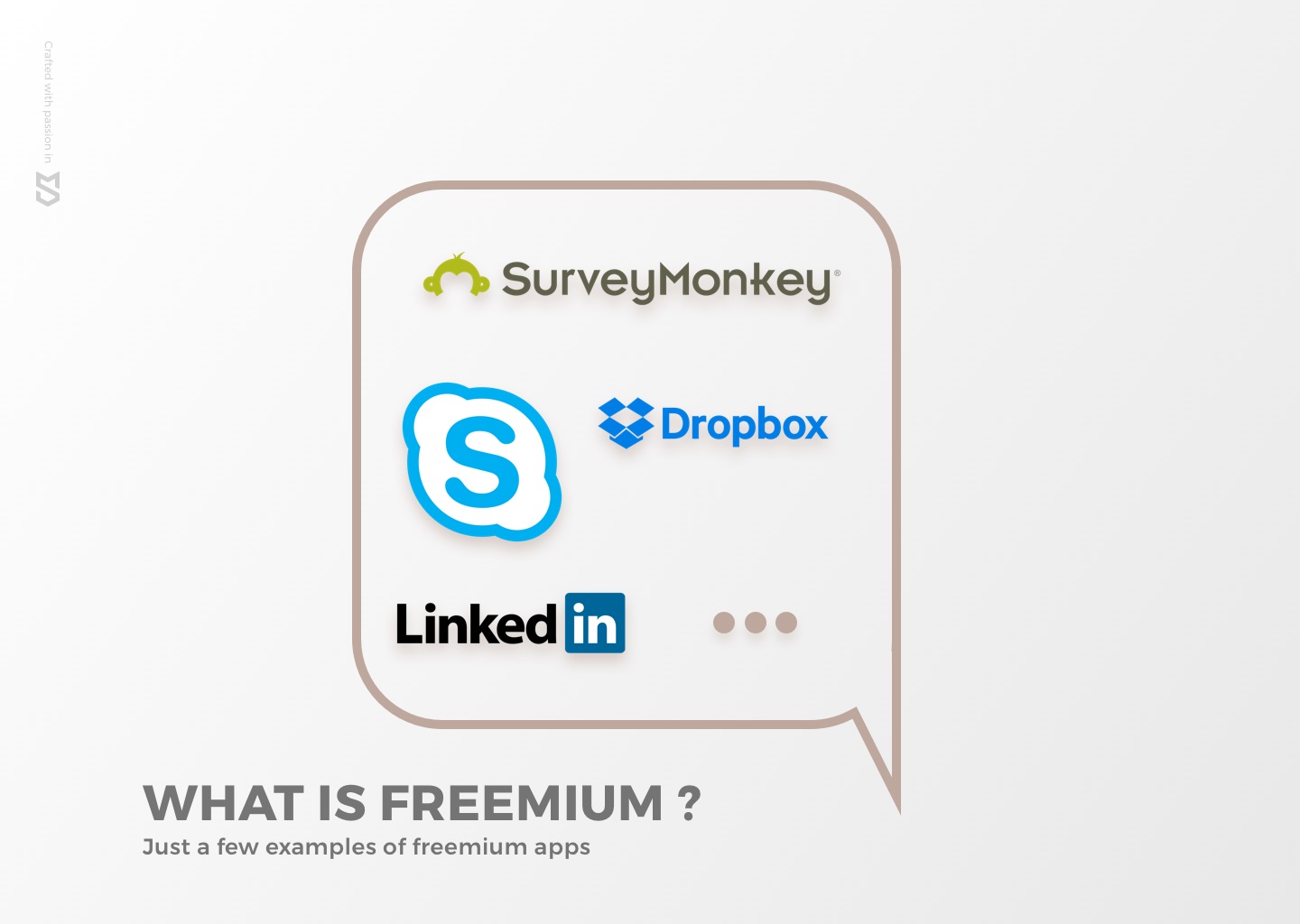
-
Spotify
This is a super app for music lovers. It lets you create playlists, save songs on your mobile devices and computers, and do a whole lot more. In return, you don’t see advertisements on your mobile phone screen. You will be able to listen music anywhere. Read more about how to make a music streaming app like Spotify. -
Box
Box offers two secure cloud storage plans with different amounts of storage. The free plan offers 10 GB of storage with a 250 MB file size upload restriction. The paid plan costs $9 per month and offers 100 GB of storage. -
SurveyMonkey
Survey Monkey is a great way for small businesses to conduct an effective analysis of their client markets by creating questionnaires (the main difference between the plans is the number of questions and responses allowed for each survey: up to 10 questions for free basic plan and up to 100 responses for premium versions ranging from $34 to $99 per month). -
Skype
Skype is a well-known application for communicating with people across the globe. A free Skype plan allows you to chat using instant messaging or video. However, making calls to landline or mobile phones involves purchasing packages that are valid for a particular country. In general, these packages aren’t cheap. Today, Skype has many popular competitors such as Viber and Telegram.
When using freemium monetization model, you need to be careful and balanced so as not to lose brand recognition and interest in your product.
-
Pros
Freemium apps motivate customers to purchase a paid version in future. -
Cons
You should clearly understand which part of the application can be made free for the user and at what stage the user will be happy to purchase a paid version of your product.
The main thing here is to keep a balance and work for audiences who use both the free and paid versions of your application.
Sponsorship
Sponsorship is another way to monetize an app. Sponsorship can be compared to a triangle in which you, your sponsor and the users of your application are at tops. This strategy works if you can find a sponsor with a similar or the same target audience or if you adapt the design of your icon in accordance with the sponsor’s branding. The main types of sponsorship transactions include agreed income (generated by the application) and a monthly sponsorship fee (where the sponsor pays for the service or use of your application).
The RunKeeper sports application, with an audience of over 50 million users, is an excellent example of the sponsorship business model. This application encourages users to go a certain distance by running or cycling. Then, advertisers pay users for their running activity. The model is based on the credibility of developers, who don’t post any annoying advertisements.
For example, applications for conferences and exhibitions often use the sponsorship model. When downloading such an application, the visitor of the exhibition receives detailed information about the orientation/location thanks to push notifications with a suggestion to visit stands of certain exhibiting companies.
These companies must pay the application developer for sending push notifications. Push notifications are a useful tool for this method of monetization; in addition, the users themselves can choose whether to receive push notifications.
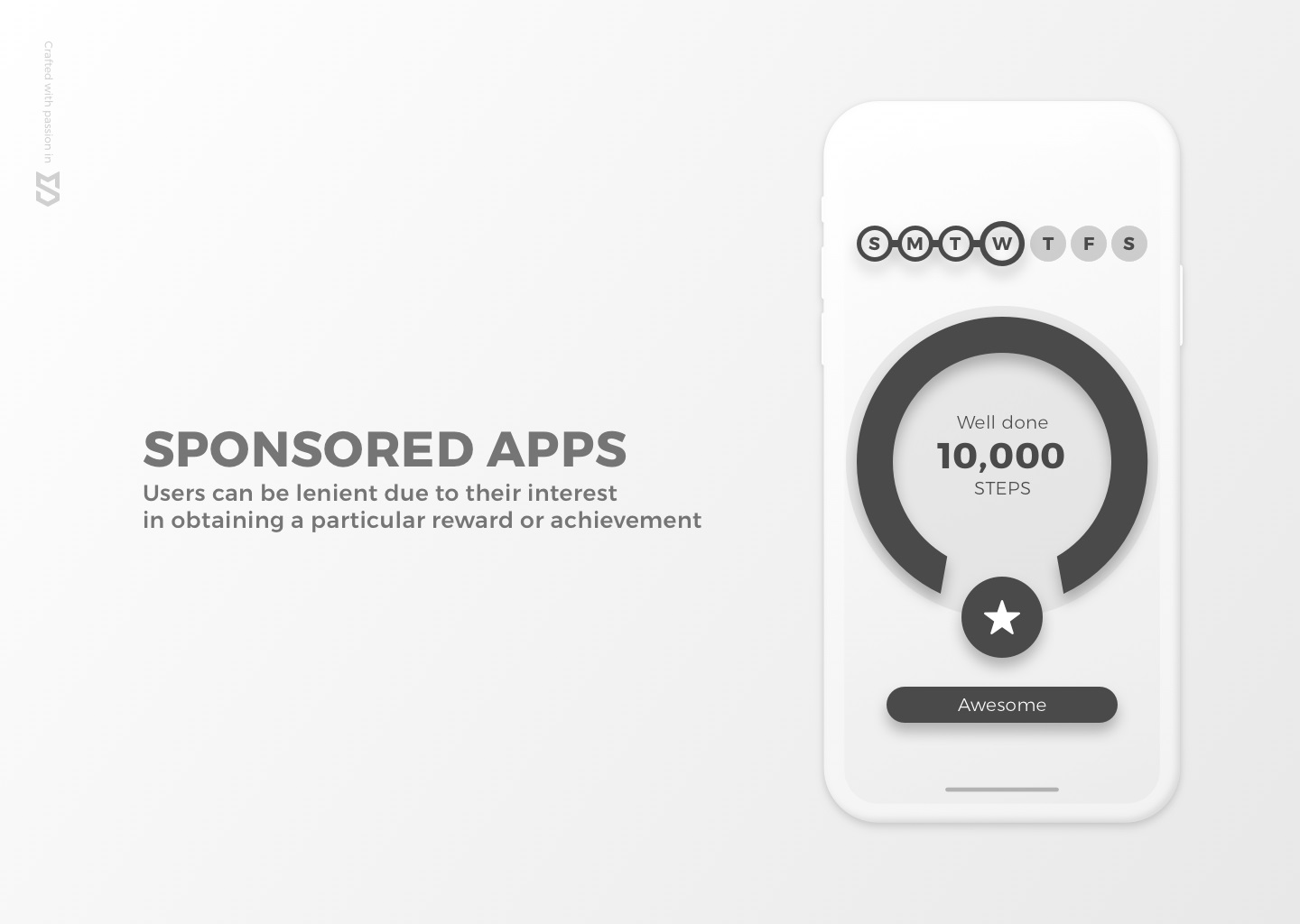
-
Pros
The positive thing about sponsored apps is that their customers can be lenient to use these apps due to the interest in obtaining a particular reward, but for this they need to be really motivated. -
Cons
Although this method is suitable for many types of applications, it isn’t worthwhile relying on it as a long-term source of income. In addition, you need to remember that in the case of sponsorship, you must pay a commission to the app store that distributes your product. Obviously, it can shoot once. In addition, this strategy doesn’t allow you to get increasing income.
Subscriptions
Subscriptions are a type of revenue model for free applications with functions that are restricted in time. This means that the customer must pay a monthly fee to get full access and unlock restrictions.
This strategy is great for cloud services, online newspapers, or magazines (for example, an annual subscription to The New York Times or The Wall Street Journal) and streaming video and audio. You can provide users with a free trial period (in many cases 7 days) and charge a subscription fee for continued access without restrictions.
According to Sweet Pricing, only 5% of the most successful applications use subscriptions.
In-app purchases
One of the most interesting methods of monetization that we’ll consider in this article is in-app purchases. How can you integrate in-app purchases into your application?
The main idea is that the customer can make purchases inside the application, such as for premium content or virtual items. Applications that can benefit from in-app purchases include mobile games and online stores. For example, users can buy currency in a game or unlock game levels.
With in-app purchases, users can buy consumable products that are used once (for example, virtual currency) or non-consumable products that don’t expire (for example, new game levels) or subscriptions to unlock features and content for a limited period. Half of popular applications already offer the ability to make purchases as a revenue stream, and in the future, this model will dominate among all monetization strategies.
The popular Viber application for iPhone and Android is free, but you can go to the sticker store and purchase stickers you like to use them in regular chat messages. Viber has also used advertising since 2017.
-
Pros
In-app purchases can be integrated into any type of application. According to an online survey by Gartner, mobile application users spend 24% of fund more on in-app purchases than they do on paid applications. This consumer preference shows that purchases in applications offer flexibility to the customer, providing a better customer experience than paid downloads. -
Cons
A downside of in-app purchases is is that you need to inform the client in detail and what they're purchasing and how much it costs, so you have to constantly communicate with the client. However, this is more an additional point, not a negative one.
How do mobile applications generate revenue? According to the Sweet Pricing report, advertising space still holds the lead among application monetization strategies and accounts for the primary monetization strategy of 65% of all applications on the market.
Nevertheless, developers actively use in-app purchases to monetize their mobile applications.
Steps to increase sales in a mobile application
What can you do to increase in-app purchases?
First step
The first thing you can do to increase in-app purchases is target your audience: determine who your potential users are, understand their needs and interests, and know what will motivate them to make purchases in your application. Understanding what your users need and how to facilitate their role in your application is the basis of your success with in-app purchases!
For example, it’s important to understand what the user can pay for while in your application. Allow users to freely use your application with only a few limitations. Minimize the number of barriers between you and your user.
If your mobile application is a game, then try to interest users with the possibility of developing of their characters within the game, improving their skills, and gaining experience. You can also work to increase the average time users spend in your game. If your game provides multiple levels, then in-app purchases can let users regulate the complexity of the levels, namely by skipping more complex levels or offering bonuses as a tool to encourage for passing the game. The main thing is to keep the attention of users on the game so that when they face difficulties or have trouble overcoming obstacles they don’t become disappointed and leave your game. Let the user be unique; let their character have its own personality and make the interface design bright and memorable.
Thus, there’s a high probability that users will spend money while in their session. In addition, you can include methods of passive monetization, for example in the form of advertising.
Second step
The second step is to control the customer’s behavior when making a purchase: what main factors influence their choice. How can you motivate the client to purchase? You can to perform an act such as a good offer/gift or discount. By such simple actions, you return the user to your application and also prolong its life cycle.
Marketers compare the client’s path with the sales funnel and divide this path into three stages: the upper part is acquaintance (awareness of the product), the middle is evaluation (evaluating the suitability of the product), and the lower part is the purchase (the final stage of becoming a customer).
If your product is a game, then a bonus system will be relevant, for example a virtual currency as a reward for inviting friends to play via email or social networks, subscribing to a newsletter, or creating an account.
Third step
Third, from the foregoing, it is clear that interacting with users is fundamental in learning about your customers. Y drives users to return to your application and make new purchases. This drives the user to return to your application and make new purchases. Focus on the overall process of buying your product. What is stopping customers from completing purchases?
This fact is a common trend in the market, and most companies don’t take into account the buyer’s interests, namely how to satisfy their emotional and psychological needs, in order to influence users and motivate them to complete purchases. If users are confident about the quality of your product, then they’ll spend more money on purchases in your application.
To make your application quick and convenient, you can introduce loyalty programs (a prerequisite to building a monetization strategy) if your product is for a restaurant, shop, or beauty salon, for instance.
To bring users closer to your application, you can take the following actions:
- Offer a bonus program. A clear description of this program can increase the average order size of the first purchase.
- Evaluate customer behavior.
- Set up an automatic loyalty program with triggers.
- Build relationships of trust with customers.
Often, these actions can help to return a lost customer.
To control the interactions between your business and your customers as well as to make a profit, choose the right path that will allow you to collect customer data and identify offers to target different segments of your audience.
Fourth step
Your fourth step is pricing your product and evaluating your possible profit. You can check your purchase settings in the Google Play Developer Console. We advise you to analyze what has already been done by other developers in your field and to identify costly mistakes and solutions to avoid them.
One of the secrets of a successful business is to always be on the move, to improve your content and attract new users and, of course, to encourage existing users. Don’t stop asking yourself questions about improving the effectiveness of the in-app purchasing strategy in your mobile application.
Fifth step
The question of customer satisfaction is one of the most important in the organization and functioning of your business, including for sales. You need to understand your customer and discuss problems that arise in a language that both of you understand. Here, the terminology of the marketing analysis, which is characterized by its power and efficiency, enters into force. Do you know what words have a big impact on consumer behavior? They include words such as sale, guaranteed, free of charge, and so on.
Make your customers happy with your application! When a person is happy, they want to make purchases and will be fine with IAP advertising or willing to pay extra for premium features.
Commission
Google and Apple let application developers process transactions through their platforms. For purchases of paid apps as well as for in-app purchases, the App Store and Google Play Store both charge a 30% commission.(!!!)
Common mistakes when monetizing free apps
The planning stage of the monetization process has to be smartly designed, enabling you to overcome any problems that arise. Don’t annoy users. Advertising in your application (in the form of pop-up windows or streaming video) should look natural.
Pay attention to analytics while developing mobile apps to make money. This information will be very useful for determining the success of your monetization strategy, since analytics shows basic information:
- The number of installs of your application
- The number of new and active users
Information about users’ age, gender, language, location, and income that can help you identify your target audience. - The frequency of use of your application
- Whether there are problems with the functioning of the application
- Information about product versions and devices
- Events inside the application
- Number of sessions and their length as well as navigation on the screen
Using Google Analytics, Flurry Analytics, or Mixpanel, you can determine which features of your mobile application are most popular and get information about the target audience. Your next step will be to update your application using this data.
Take into account that strategies for generating revenue from custom mobile development for Android and iOS may differ, so before you decide on a monetization strategy we advise you to study in detail the information on how free applications for Android and iOS earn money.
General errors can also include overcharging for interesting functionality. Not all users are willing to pay a lot for freemium apps or in-app purchases. Besides, your competitors are those applications that don’t charge anything at all. As a rule, a good fee varies from $0.99 to $1.99.
Don’t forget that in addition to developers, your team should include people who will make your project popular so that it brings you revenue: sales managers, promoters, and others.
Monetization tools for mobile app promotion
Effective promotional tools play an extremely important role in monetizing your application. For example, Apple has its own advertising tool for applications; it can combine all interesting ads into your application and into one platform. Facebook’s advertising system can display ads inside its application, thereby increasing the accuracy of targeting, which positively affects revenue.
Among tools for in-app advertising it’s worth mentioning the following:
- InMobi — allows users to leave feedback on advertising and also helps in creating the best UX
- AdMob by Google — allows users to use Google Analytics to better understand their audience, improve their advertising, and attract new customers
- Amazon’s advertising system — selects advertisements that best fits an application's design and is synchronized with the Tapjoy and Appsfire smart assistants
- The StartApp platform — implements search monetization in the mobile sphere, successfully advertising other applications (100,000 applications) and determining advertising priorities
Read also: How to Write Business Plan for Mobile App?
Imagine the future you want
Money should serve you, not dominate you.
So can a mobile application be not only an assistant for business but also your independent source of income? Studying this issue will help you to understand the choice of strategy to make money with your app. Some people choose an ad network in their application, others offer premium functionality, thereby highlighting their content, and others makes their content generally paid. This can help you answer the question: What is more profitable?
The first step is to determine which type of monetization suits you personally. We’ve described only a few ways to make money with apps. As a mobile application owner, you need to develop smart strategies for monetizing your project that will allow you to be present on the market and, most importantly, to establish yourself.
Where should you begin? Studying all the variants of the proposed strategies from displaying ads to in-app purchases will give you an excellent theoretical basis.
However, if you aren’t completely sure what to choose, then contact us for a free consultation.

